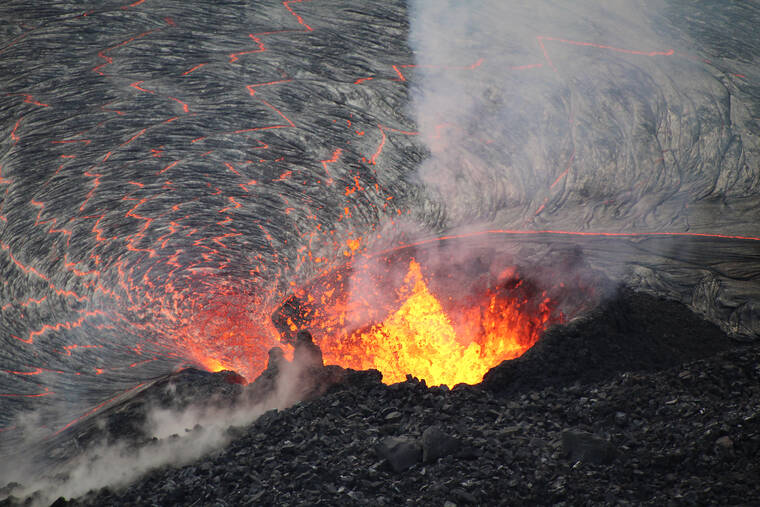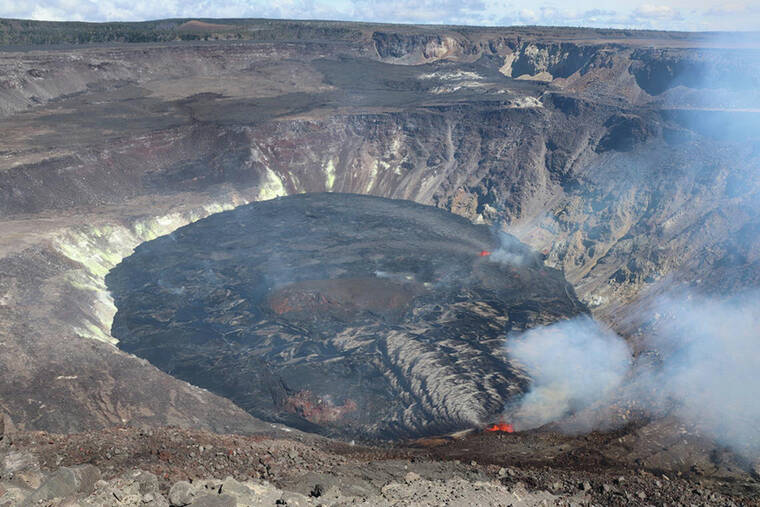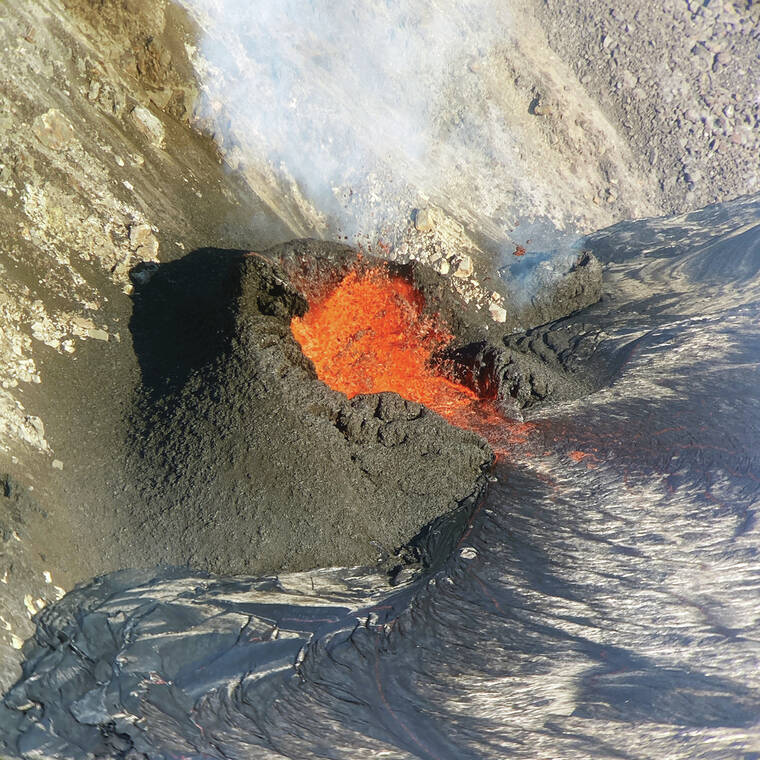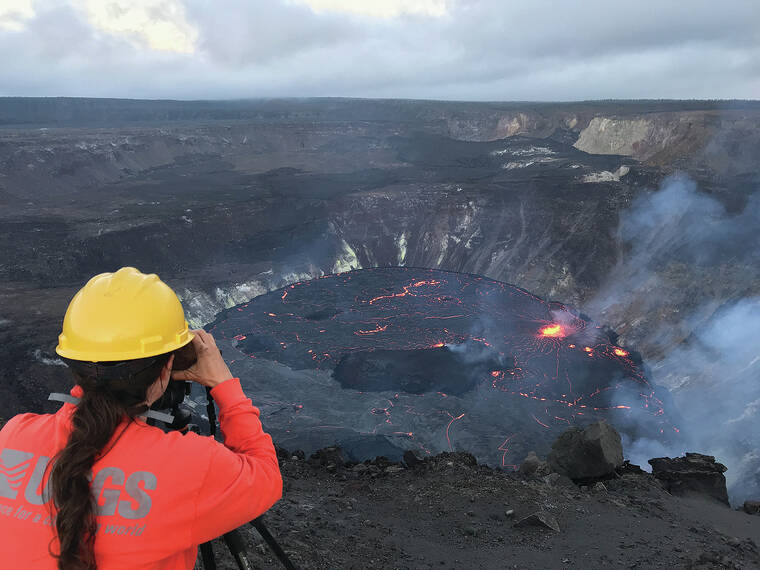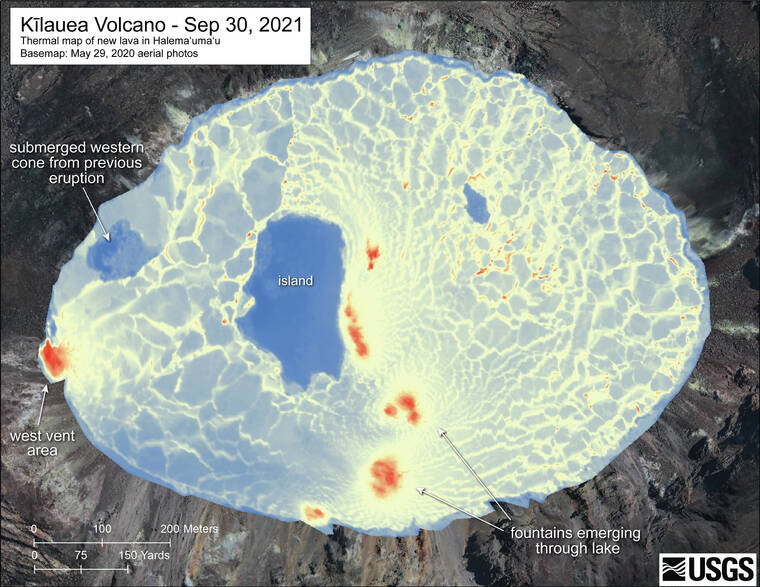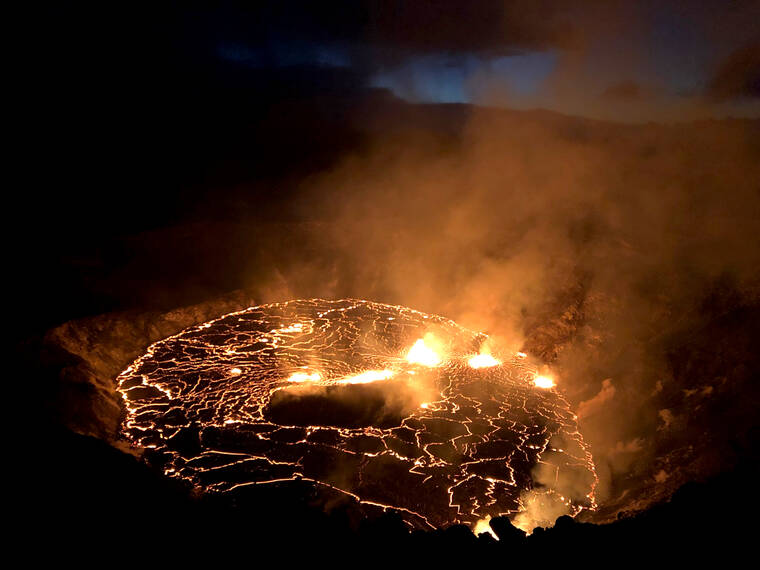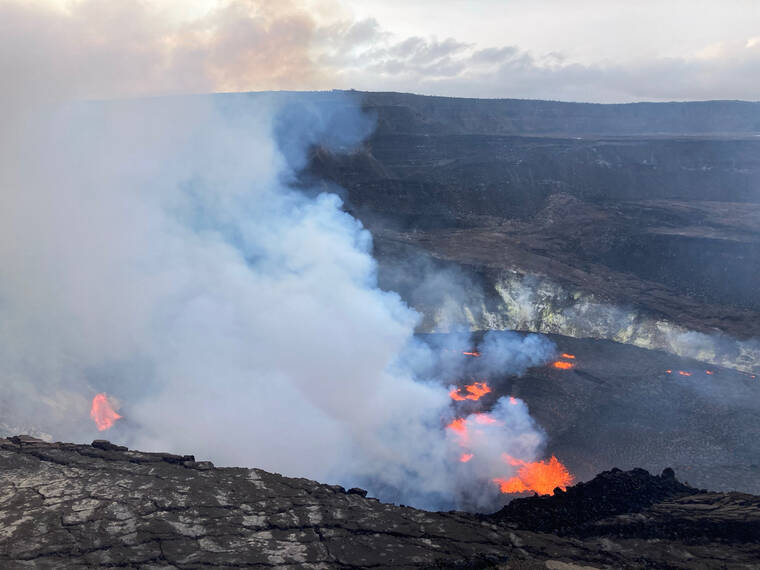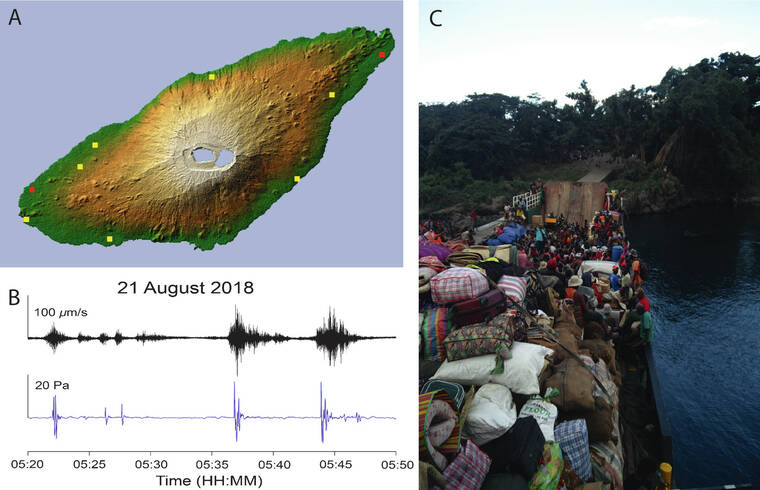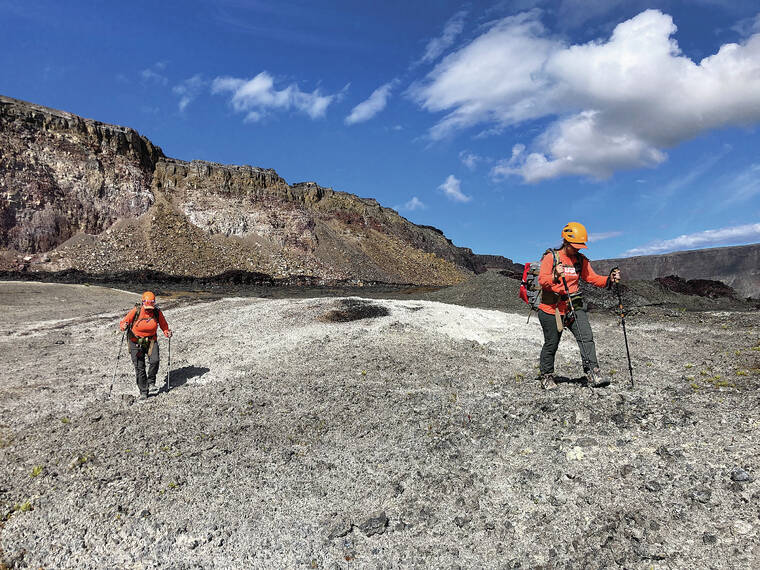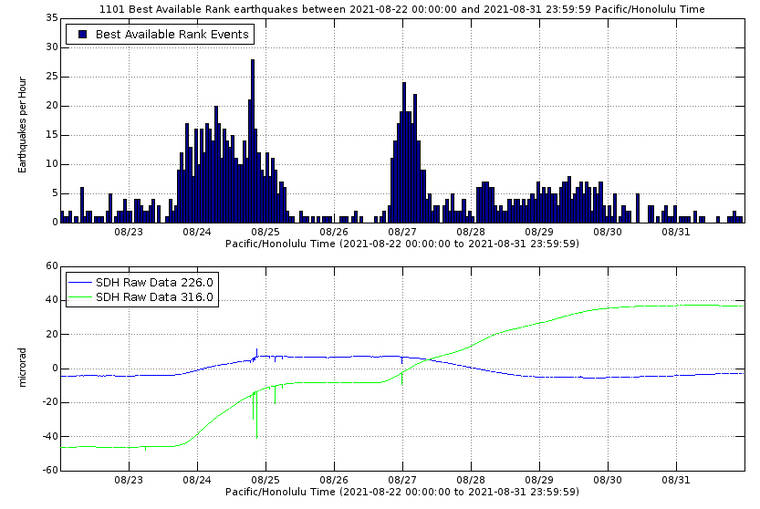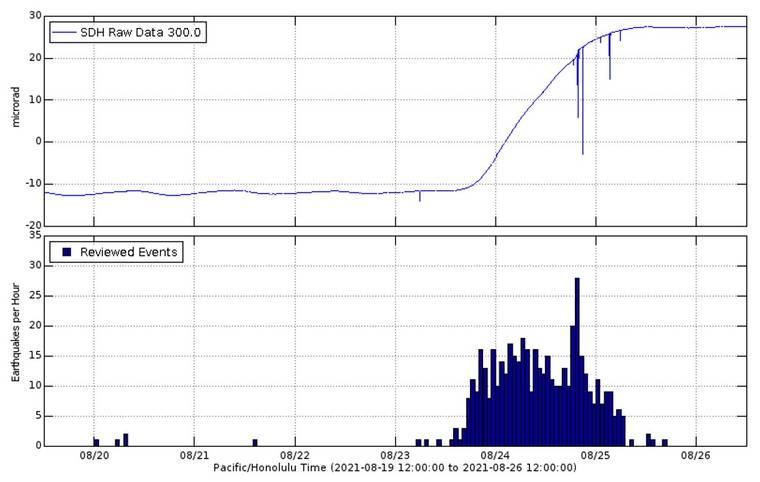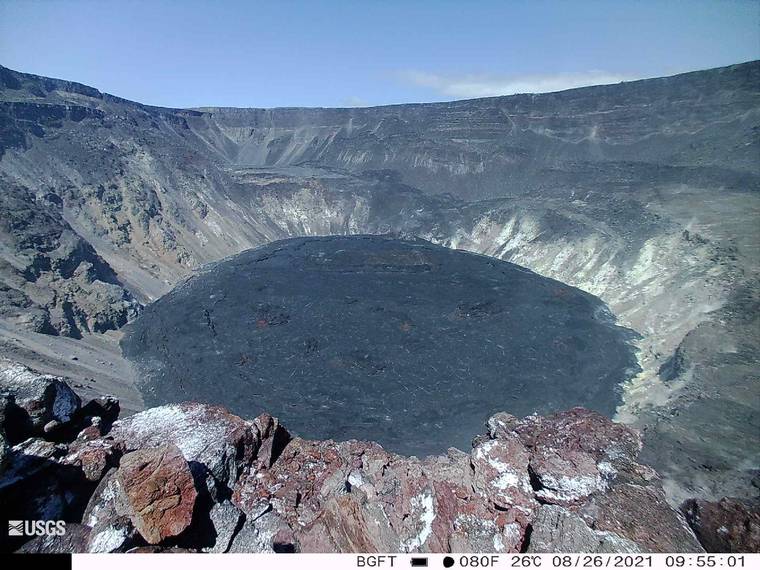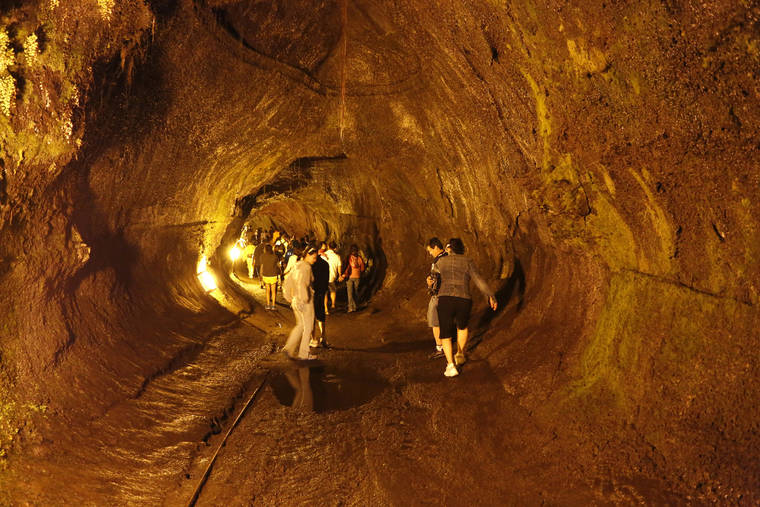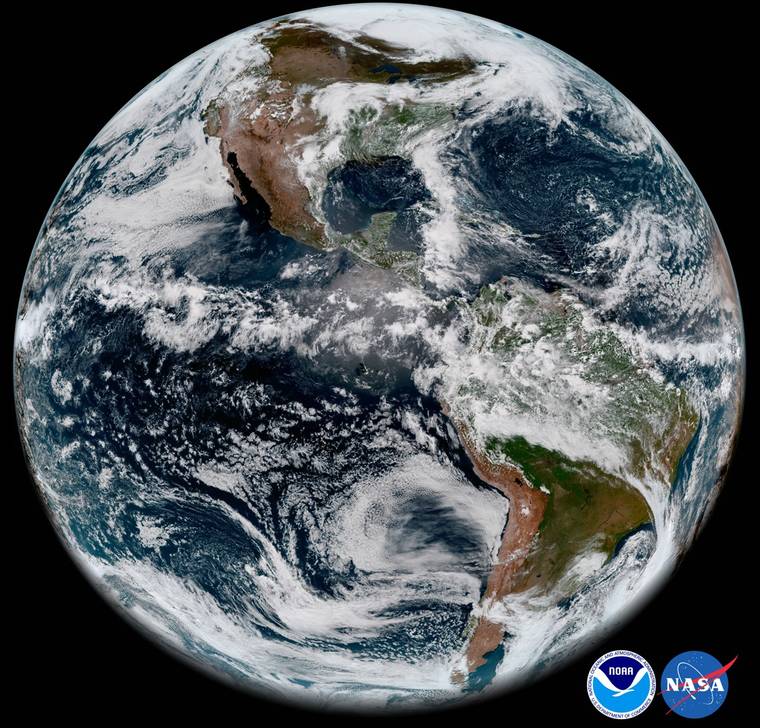Kilauea volcano eruption continues
Kilauea volcano’s summit lava lake continued to rise Wednesday, one week after the start of the most recent eruption within Halema‘uma‘u crater.
Kilauea volcano summit lava lake rising
Kilauea volcano’s summit lava lake rose by 3 feet between Monday and Tuesday, the Hawaiian Volcano Observatory reported Tuesday morning.
Kilauea alert level lowered
The Hawaiian Volcano Observatory Monday lowered Kilauea volcano’s alert level, noting less vigorous lava fountaining, reduced emissions and no indication of activity migrating outside the summit caldera.
Kilauea eruption persists: Lava lake continues to grow; emissions still elevated
Kilauea volcano’s summit eruption persisted for a fifth day Sunday with lava continuing to erupt from multiple vents within Halema‘uma‘u crater.
Volcano Watch: A new eruption in Halema‘uma‘u
Kilauea volcano is erupting again. Wednesday afternoon, lava returned to Kilauea’s summit within Hawaii Volcanoes National Park after a 4-month hiatus. A new line of fissures sliced through the solidified crust of the 2020–21 lava lake in Halema‘uma‘u at 3:21 p.m. HST.
Kilauea volcano eruption continues, lava lake growing within Halema’uma’u crater
The eruption within Halema’uma’u crater, at Kilauea volcano’s summit within Hawaii Volcanoes National Park continued Thursday morning.
Video: Lava fountaining inside Kilauea volcano
Lava is seen fountaining inside Kilauea volcano in Hawaii Volcanoes National Park on Wednesday in this video from the U.S. Geological Survey.
Kilauea once again erupting
Kilauea volcano is again erupting, the Hawaiian Volcano Observatory said Wednesday.
New HVO buildings would include research center at UH-Hilo, field station at HVNP
Hawaii Volcano Observatory’s scientist in charge said Tuesday progress is being made toward its new facilities.
Volcano Watch: Observations and impacts of the 2017-18 Vanuatu eruption
The Pacific is home to dozens of active volcanic systems including the massive Hawaiian shield volcanoes Kilauea and Mauna Loa. Most basaltic shield volcanoes in the Pacific are related to the hotspots that created the Hawaiian Islands and many of the Polynesian and Micronesian island chains.
Volcano Watch: How does HVO determine which regions are most threatened by lava flows?
Most residents of the Island of Hawaii live on one of four potentially active volcanoes and probably have wondered about the threat of lava flows at one time or another. Interestingly, determining future threats relies on knowledge of the past. The long-term likelihood of an area being invaded by lava in the future, is estimated in two different ways based on the history of lava flow activity.
Volcano Watch: The MILEAGE project — mapping Kilauea’s gas emissions
Large quantities of volcanic gases, such as carbon dioxide (CO2), sulfur dioxide (SO2), and hydrogen sulfide (H2S), are released into the atmosphere during volcanic eruptions. But even between eruptions, smaller amounts of the same gases continue to escape and can provide important clues about the current state of the volcano and the underlying magma. But to measure them, you first must identify where gas is coming from.
Volcano Watch: Eruption? Intrusion? What’s the difference?
We know that when a volcano erupts, molten red rock makes it to the surface, while during an intrusion it doesn’t. The difference between the two processes, if we depend on seismicity (earth shaking) or deformation (changes in ground surface) instrumentation, is not obvious. The events during the start of either are identical. But we can’t be certain that an intrusion will lead to an eruption.
Volcano Watch: New Kilauea summit intrusion draws comparison to past activity
Late Monday afternoon, earthquake activity picked up at Kilauea’s summit. At about 1:30 a.m. HST on Tuesday, that activity intensified, and it became clear that seismicity and increasing deformation were indicating a new intrusion of magma. The seismicity extended southward from Halema‘uma‘u crater, to an area south of the Kilauea caldera.
HVO detects renewed earthquake, deformation activity at Kilauea summit
Scientists with the U.S. Geological Survey’s Hawaiian Volcano Observatory said Friday morning that earthquake activity and ground deformation has resumed beneath the southern part of Kilauea summit caldera within Hawaii Volcanoes National Park.
Kilauea earthquake swarm wanes, alert level lowered
The Hawaiian Volcano Observatory reported Thursday morning the earthquake swarm that began Monday beneath the south part of Kilauea caldera, within Hawaii Volcanoes National Park, has waned.
Kilauea alert level raised after series of earthquakes
The Hawaiian Volcano Observatory raised its alert level for Kilauea from “advisory” to “watch” Tuesday morning after an ongoing series of small earthquakes was detected beneath Hawaii Volcanoes National Park.
Volcano Watch: ‘Aila‘au — the largest subaerial Kilauea lava flow
Kilauea volcano alternates between periods dominated by lava flows, such as the one we are currently in, and periods of explosive activity. About 1,000 years ago, effusive eruptions broke a 1,200-year period of predominantly explosive activity. During this time, lava flows accumulated on the floor of the Powers caldera — the predecessor of the present-day caldera at Kilauea summit. Eventually, lava filled and started to overflow the caldera, forming two large shields where the caldera had been.
Volcano Watch: 1790 was a bad year at Kilauea
The deaths apparently occurred along a trail crossing the northwest flank of Kilauea near Namakanipaio, when a ground-hugging surge of hot steam and rocks swept across the ground at high speed. Wet volcanic ash fell just before the lethal surge, and several hundred people left footprints in the ash beyond the limit of the surge.
Volcano Watch: A spaceborne sentinel keeps watch over Hawaiian volcanoes
Geologists at the USGS Hawaiian Volcano Observatory (HVO) had their mobile phones buzzing this past week with automated alert messages, notifying them that there was something new and hot on the Island of Hawaii. Although the internal alert system is meant to detect new volcanic activity, no eruption was occurring.

